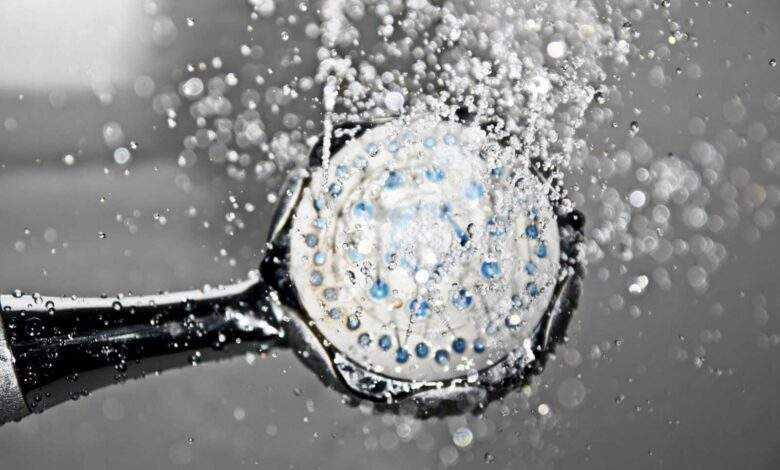Sustainable Shower Power: Water-Saving Techniques and Eco-Friendly Showerheads

Introduction to Sustainable Showering
Water conservation has become a critical concern in today’s world, with households playing a significant role in this effort. Among the various areas in a home where water usage is substantial, the bathroom stands out, particularly during showers. Understanding the environmental impact of water usage in households is pivotal to adopting sustainable shower practices. Each drop of water saved contributes to the broader goal of environmental preservation, making it essential for individuals to become more conscious of their water consumption.
Reducing water usage in the shower not only helps in conserving this precious resource but also significantly lowers utility bills. By incorporating water-saving techniques, households can achieve substantial savings over time. One effective way to reduce water consumption is by using a water-saving shower head. These showerheads are designed to minimize water flow without compromising the shower experience. Innovations such as the eco-friendly showerhead and the high-pressure low flow shower head ensure that users enjoy a powerful shower while conserving water.
Adopting sustainable shower practices offers multiple benefits. Besides the obvious environmental advantages, it also promotes a healthier lifestyle and contributes to a sustainable future. Installing a water sense shower head, for instance, ensures compliance with efficiency standards while maintaining optimal performance. Families can further enhance their water conservation efforts by exploring DIY water-saving shower hacks and considering sustainable bathroom upgrades.
In today’s eco-conscious world, the importance of reviews of eco-friendly showerheads cannot be overstated. These reviews help consumers make informed decisions, leading to the selection of the best water-saving shower heads tailored to their specific needs. Additionally, understanding how much water a shower uses per minute can provide valuable insights into how to save water in the shower effectively.
Overall, embracing sustainable showering practices is a step towards reducing water usage and fostering a more eco-friendly lifestyle. Through simple yet effective measures, individuals can make a significant difference, ensuring a more sustainable future for generations to come.
The Environmental Impact of Traditional Showers
Traditional showers play a significant role in environmental degradation, primarily through excessive water usage and the energy needed to heat this water. On average, a conventional showerhead dispenses about 2.5 gallons of water per minute. Considering that the average shower lasts around eight minutes, this results in approximately 20 gallons of water being used per shower. This level of consumption contributes to the depletion of local water resources, which is particularly concerning in areas prone to drought.
Moreover, the energy required to heat water for showers further amplifies their environmental footprint. Heating water is one of the most energy-intensive domestic activities, often accounting for nearly 20% of a household’s energy use. For instance, heating water for a single shower can release around 2.5 pounds of CO2, contributing to greenhouse gas emissions. These emissions are a significant factor in climate change, exacerbating the global environmental crisis.
The carbon footprint of traditional showers doesn’t stop at water heating. The infrastructure needed to deliver water to homes and process wastewater also consumes substantial amounts of energy and resources. For example, treating and transporting water in the United States alone consumes about 13% of the nation’s electricity. This further underscores the need for sustainable shower practices and eco-friendly showerheads that can significantly reduce water and energy consumption.
Real-world examples highlight the severity of the issue. For instance, in areas like California, where water scarcity is a pressing concern, millions of gallons of water are wasted daily due to inefficient showering practices. Similarly, the excessive energy used for heating water contributes to the high carbon footprints of households, making it imperative to adopt low flow shower heads and other water-saving shower technologies.
Implementing sustainable shower practices and using eco-friendly showerheads can mitigate these impacts. Upgrading to a high pressure low flow shower head can reduce water usage in the shower without sacrificing the quality of the shower experience. Additionally, water sense shower heads are designed to use 20% less water than standard models, offering a practical solution for both water conservation and reducing household energy bills.
Water-Saving Techniques for Showers
Implementing water-saving techniques in your daily shower routine can contribute significantly to water conservation and sustainability. One of the simplest and most effective methods is reducing your shower time. By cutting down your shower duration by just a few minutes, you can save a considerable amount of water. For instance, a family of four can save up to 16,000 liters of water annually by reducing their shower time by just two minutes per person each day.
Another practical technique is using a bucket to catch and reuse water. Place a bucket in the shower to collect the cold water that runs before the shower heats up. This water can be repurposed for various household tasks, such as watering plants or cleaning. This small practice not only reduces water wastage but also promotes a more sustainable lifestyle.
Turning off the water while lathering, shampooing, or shaving is another effective way to save water in the shower. By simply turning off the tap during these activities, you can significantly reduce the amount of water used. For those looking to invest in sustainable bathroom upgrades, installing a water sense shower head can make a substantial difference. These eco-friendly showerheads are designed to reduce water usage without compromising on water pressure, providing a high pressure low flow shower head experience.
Moreover, adopting sustainable showering tips for families can further amplify water conservation efforts. Encourage family members to be mindful of their water use and to try out DIY water saving shower hacks. For example, setting a timer to remind everyone to keep their showers short or using a water saving shower head for hard water areas can make a noticeable impact.
By integrating these water-saving techniques into your daily routine, you not only contribute to water conservation in the bathroom but also learn how to save money on water bills. Small changes, such as the ones mentioned above, can collectively lead to significant reductions in water usage and foster a more sustainable approach to daily living.
Benefits of Eco-Friendly Showerheads
Eco-friendly showerheads offer a multitude of benefits that extend beyond water conservation. One of the most significant advantages is their water efficiency. Traditional showerheads can use up to 2.5 gallons of water per minute, whereas eco-friendly alternatives, such as WaterSense certified models, often reduce this to 2.0 gallons per minute or less without compromising performance. This reduction not only helps conserve water but also lowers utility bills, providing a financial incentive for households to make the switch.
Another key benefit is the cost savings on water bills. By reducing water usage, eco-friendly showerheads directly impact the amount of money spent on water each month. Over time, these savings can add up significantly, making the initial investment in a high-quality, water-saving shower head a sensible economic choice. Furthermore, many eco-friendly showerheads are designed to enhance water pressure and deliver a satisfying shower experience, countering the common misconception that reduced water flow equates to poor performance.
In addition to immediate benefits, eco-friendly showerheads contribute to long-term environmental sustainability. By conserving water, they help reduce the strain on local water resources and lower the energy required for water heating, resulting in decreased greenhouse gas emissions. This cumulative effect supports broader environmental goals and promotes responsible resource management.
The advantages of eco-friendly showerheads go beyond just saving water in the shower. They represent a proactive step towards sustainable living, offering improved efficiency, cost savings, and enhanced performance. As more households adopt these technologies, the collective impact on water conservation and environmental health will be substantial, emphasizing the importance of making eco-friendly choices in our daily lives.
Types of Eco-Friendly Showerheads
Eco-friendly showerheads play a significant role in water conservation efforts, offering various features designed to reduce water usage in the shower without compromising on performance. Understanding the different types of eco-friendly showerheads available can help you make a well-informed choice for your bathroom.
Low-Flow Showerheads: Low-flow showerheads are designed to use significantly less water compared to traditional models, typically limiting water flow to 2.5 gallons per minute (GPM) or less. These showerheads often employ advanced technology to maintain water pressure, ensuring a satisfying shower experience. The main advantage of low-flow showerheads is their ability to reduce water usage in the shower, thus saving money on water bills. However, some users may find the reduced water flow less satisfying, particularly if they are accustomed to high-pressure showers.
Aerated Showerheads: Aerated showerheads mix water with air to create a mist-like flow that feels as forceful as a traditional shower, but uses less water. This method can be very effective in achieving a balance between water conservation and user satisfaction. One of the pros of aerated showerheads is their ability to provide a consistent and enjoyable shower experience while using less water. On the downside, these types of showerheads can sometimes cause a slight decrease in water temperature due to the introduction of air.
Smart Showerheads: Smart showerheads represent the latest in water-saving technology. These devices can monitor water consumption, provide real-time feedback, and even offer programmable settings to optimize water usage. Some models include features such as timers or LED indicators to alert users when they have exceeded a recommended shower duration. The primary advantage of smart showerheads is their ability to offer detailed insights and customizable options to further save water in the shower. However, they tend to be more expensive and may require a more complex installation process compared to other types of eco-friendly showerheads.
In summary, selecting the best water-saving shower head depends on your specific needs and preferences. Whether you opt for a low-flow, aerated, or smart showerhead, each type offers unique benefits that contribute to sustainable shower practices and water conservation in the bathroom.
How to Choose the Right Eco-Friendly Showerhead
Choosing the right eco-friendly showerhead involves evaluating several critical factors to ensure it meets your specific needs while promoting sustainable shower practices. One of the primary considerations is water pressure compatibility. A high pressure low flow shower head is an excellent choice for those who prefer a robust shower experience without compromising on water conservation. Look for showerheads labeled as WaterSense, which are certified to use at least 20% less water than standard models while maintaining optimal performance.
Budget is another crucial aspect to consider. Eco-friendly showerheads come in a range of prices, from affordable basic models to more advanced options with additional features. It’s essential to balance cost with long-term savings on your water bill. For instance, investing in the best water saving shower head can result in significant water and energy savings over time, making it a cost-effective choice in the long run.
Ease of installation is equally important. Many eco-friendly showerheads are designed for DIY installation, allowing you to upgrade your bathroom without professional assistance. Look for user-friendly models with straightforward instructions and minimal tools required. For those dealing with hard water, selecting the best water saving shower head for hard water can prevent buildup and maintain efficiency.
User reviews are invaluable when selecting an eco-friendly showerhead. Reviews of eco-friendly showerheads provide insights into real-world performance, durability, and customer satisfaction. Platforms such as online retailers and dedicated review sites can help you make a well-informed decision. Pay attention to feedback regarding water pressure, ease of installation, and overall user experience.
Reliable and certified eco-friendly showerheads can be purchased from various sources, including home improvement stores, online retailers, and specialty eco-friendly shops. Ensure that the products are certified by recognized organizations such as EPA’s WaterSense program to guarantee their efficiency and performance.
By considering these factors, you can select the right eco-friendly showerhead that not only meets your needs but also contributes to water conservation in the bathroom. This thoughtful approach supports sustainable living and helps reduce water usage in the shower, ultimately benefiting both the environment and your wallet.
Sustainable Shower Power: FAQ
This FAQ tackles common questions about water-saving techniques and eco-friendly showerheads for a sustainable shower experience.
1. Why should I care about sustainable showering?
Traditional showers use a significant amount of water, putting a strain on precious resources. Sustainable showering practices and eco-friendly showerheads conserve water, reduce your environmental impact, and potentially lower your water bill.
2. How much water can I save with a sustainable shower?
The amount saved depends on shower duration and current showerhead. Standard showerheads use 2-5 gallons per minute (GPM). Low-flow models can reduce usage by 50%, saving thousands of gallons per year for a typical family.
3. What are some sustainable shower practices?
- Shorten your shower: Aim for 5-minute showers or less.
- Turn off the water while lathering or shaving.
- Fix leaky faucets and showerheads promptly.
- Consider a Navy Shower: Quickly lather, turn off the water, wash, and rinse.
4. Do low-flow showerheads feel good?
Modern low-flow showerheads offer excellent water pressure and spray patterns. Look for models with certifications like WaterSense for guaranteed performance and water savings.
5. What types of eco-friendly showerheads are available?
- Low-flow showerheads: Reduce water flow without sacrificing pressure.
- High-pressure, low-flow showerheads: Combine water efficiency with a satisfying shower experience.
- Water-mist showerheads: Use a fine mist for a luxurious, water-saving shower.
6. How much does it cost to install a sustainable showerhead?
Showerhead replacements are relatively inexpensive and easy to install yourself. The cost savings from reduced water usage can offset the initial investment quickly.
7. Are there any maintenance considerations for eco-friendly showerheads?
Most require minimal maintenance. Some models may have mineral buildup requiring occasional cleaning.
8. What other sustainable practices can I use in the bathroom?
- Install a low-flow faucet aerator for your sink.
- Take shorter baths with less water.
- Fix leaky toilets promptly.
- Opt for water-efficient toilets when replacing older models.
9. Where can I find more information about sustainable showering?
- The Environmental Protection Agency (EPA) offers resources on WaterSense certified showerheads.
- Look for online reviews and guides on eco-friendly showerheads.
10. How can I make sustainable showering a habit?
Start small with a shorter shower goal. Track your progress and celebrate milestones. Share your sustainable showering journey with friends and family for added motivation.
Installation and Maintenance of Eco-Friendly Showerheads
Installing a water-saving shower head is a straightforward process that can be accomplished with minimal tools and effort. For those who prefer a DIY approach, begin by removing the old showerhead. Use an adjustable wrench or pliers to unscrew it from the shower arm. Be sure to protect the shower arm with a cloth to avoid scratches.
Once the old showerhead is removed, clean the threads of the shower arm to ensure a proper seal for the new eco-friendly showerhead. Wrap the threads with plumber’s tape to prevent any potential leaks. Next, screw the new low flow shower head onto the shower arm by hand, ensuring it is snug but not overtightened to avoid damage.
For those who prefer professional assistance, hiring a plumber can guarantee a seamless installation. This is particularly beneficial for complex fixtures or if existing plumbing requires modifications to accommodate the new water sense shower head.
Maintaining your eco-friendly showerhead is essential to ensure its longevity and optimal performance. Regular cleaning is necessary to prevent the buildup of mineral deposits, especially in areas with hard water. Use a vinegar solution to soak the showerhead, which helps dissolve any buildup. Simply remove the showerhead, soak it in the solution for about 30 minutes, and then rinse thoroughly.
Inspect the showerhead periodically for any signs of wear or damage. Replace worn-out parts promptly to sustain high pressure low flow shower head performance. Additionally, check for leaks and ensure that the showerhead is securely attached to the shower arm.
By following these installation and maintenance tips, you can enjoy the benefits of the best water-saving shower heads, contributing to sustainable shower practices and significant water conservation in the bathroom. Whether opting for a DIY water-saving shower hack or seeking professional help, proper care and maintenance will ensure that your eco-friendly showerhead remains efficient and effective, helping to save water in the shower and reduce your water usage in the shower.
Success Stories and Testimonials
Implementing water-saving techniques and eco-friendly showerheads has yielded remarkable results for numerous individuals and households. These success stories illustrate the tangible benefits of making sustainable choices in the bathroom, offering both environmental and economic advantages.
One family, the Johnsons, decided to switch to a high-pressure low flow shower head. Initially skeptical about the potential for reduced water usage without sacrificing shower quality, they were pleasantly surprised. The new showerhead not only maintained excellent water pressure but also significantly lowered their water consumption. The Johnsons reported a noticeable reduction in their monthly water bill, which translated to substantial annual savings. They also felt a sense of pride contributing to water conservation efforts.
Similarly, Emily Thompson opted for a water sense shower head as part of her sustainable bathroom upgrades. Living in an area with hard water, she was initially concerned about the showerhead’s effectiveness. However, after reading reviews of eco-friendly showerheads and choosing the best water saving shower head for hard water, she saw an immediate improvement in her water usage. Her shower experience remained enjoyable, and the water sense certification assured her of the product’s efficiency. Emily’s water bill saw a marked decrease, and she felt fulfilled knowing she was reducing her environmental footprint.
Another inspiring story comes from the Rodriguez household, who embraced sustainable shower practices by installing a low flow shower head themselves. They utilized a DIY water saving shower hack they found online, which further optimized their water usage. The family of four managed to cut their water consumption by nearly half, showcasing that sustainable showering tips for families can be both practical and effective. Their efforts not only conserved water but also significantly lowered their utility costs.
These testimonials underscore that adopting water-saving shower practices and using eco-friendly showerheads can lead to meaningful change. Whether it’s reducing water usage in the shower or finding the best shower head for water pressure, these individuals have demonstrated that sustainability can be seamlessly integrated into daily routines, benefiting both the planet and their wallets.








